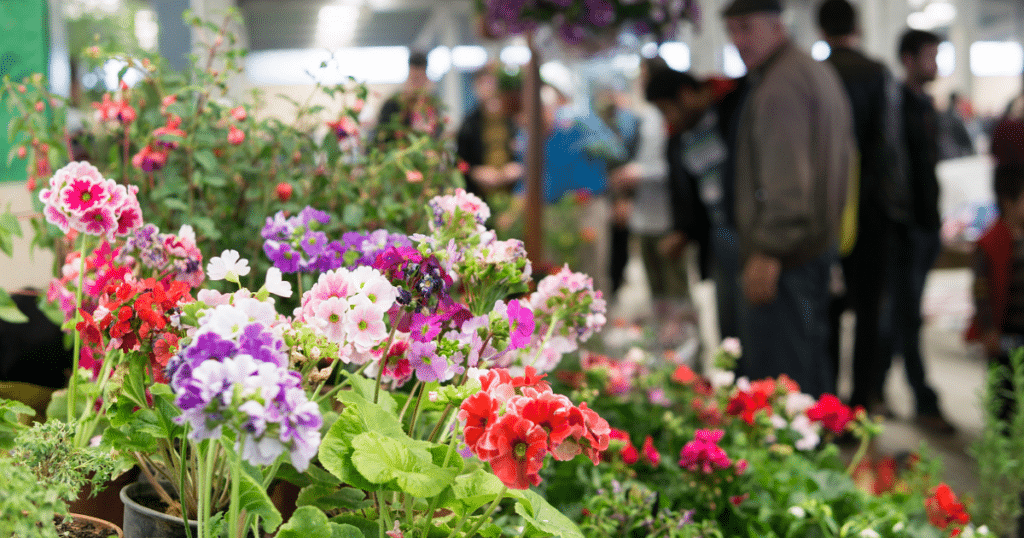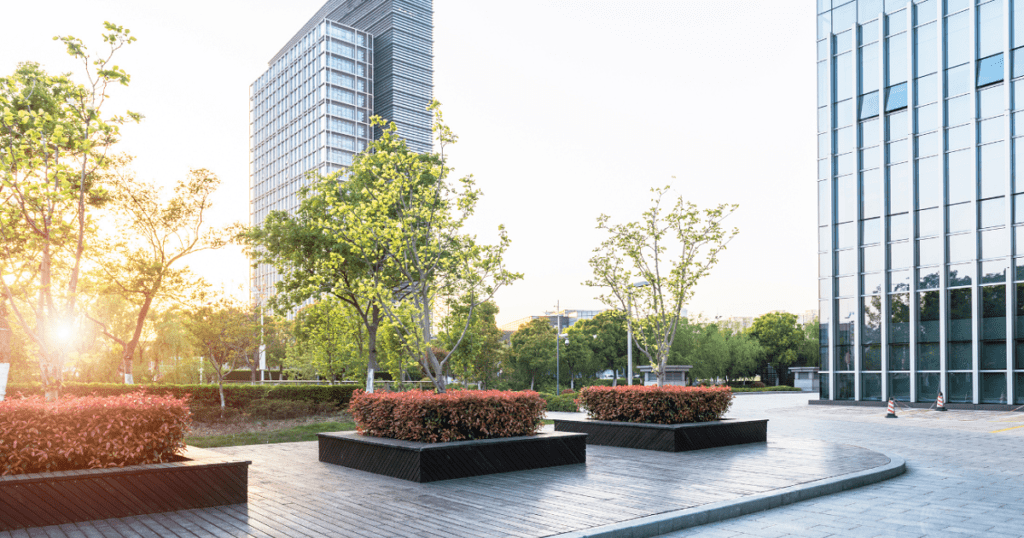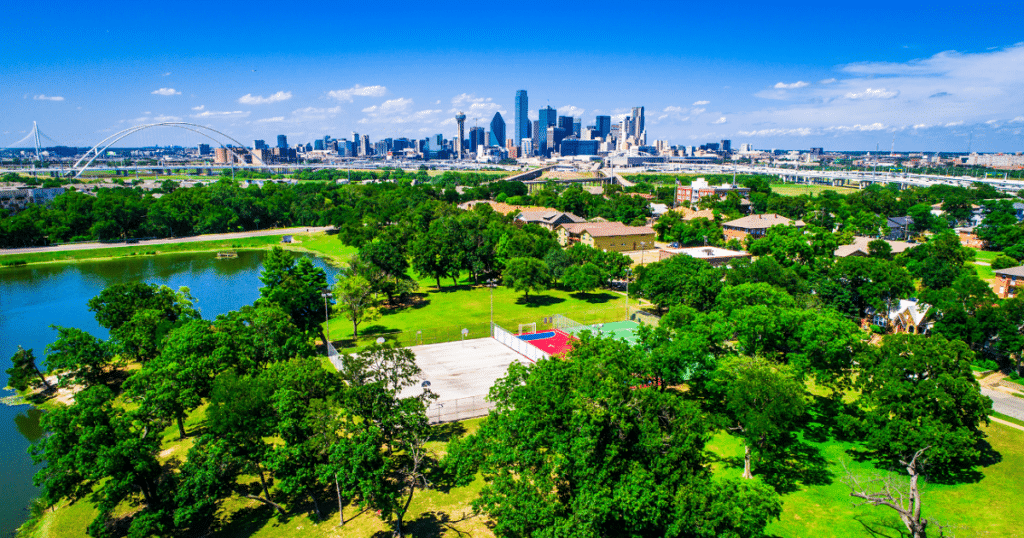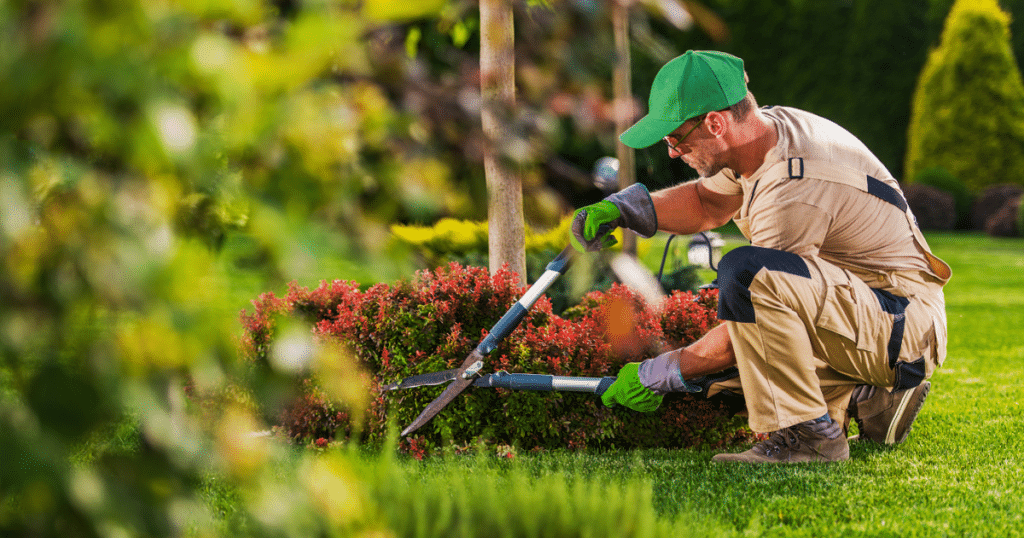
Picture yourself as an extraordinary artist, with the vast outdoors as your captivating canvas! Enter the enchanting realm of landscaping, where you don’t merely plant pretty petals but instead weave a symphony of design, horticultural mastery, and even a dash of engineering brilliance. Wondering, “What is a landscaper?” Prepare to be spellbound as we unveil the secrets of these creative maestros, orchestrating nature’s beauty into breathtaking masterpieces that will leave you in awe and craving for more!
A landscaper is a professional who specializes in the art of designing, creating, and maintaining outdoor spaces. They possess expertise in various aspects, such as horticulture, design principles, and landscape construction. Whether it’s crafting beautiful gardens, installing irrigation systems, or maintaining lawns, a landscaper’s role is to enhance the aesthetic appeal and functionality of outdoor areas.
The Art and Science of Landscaping
Importance of landscaping in society
The importance of landscaping cannot be overstated. Not only does it enhance the beauty of our environment, but it also provides numerous economic benefits.
For example, properly designed landscapes can increase property values by up to 20%. It can also reduce energy bills by up to 50% through strategic planting for shade or insulation purposes.
Landscapes provide environmental benefits as well by reducing soil erosion through proper drainage systems installation, thus minimizing water pollution run-off into nearby lakes or rivers, which is harmful to aquatic life. Furthermore, public areas, including parks, help reduce the heat islands effect, which decreases temperatures on hot days, especially in urban areas, while providing recreational facilities for communities
What is a Landscaper and Its Role
A landscaper plays a crucial role throughout the entire landscaping process, from site analysis and planning all the way through installation. In most cases, landscaping projects include the following steps: Site analysis and planning, which involves assessing soil quality, topography, and drainage systems.
Design creation and presentation to clients; this is where the landscaper uses 3D software to help visualize what is planned for the property. Installation process, which includes installation of irrigation systems and planting of trees and shrubs, among other things.
A landscaper also ensures that outdoor spaces are well-maintained through pruning, fertilization, weed control, and pest management practices. In addition to these responsibilities, landscapers must stay up-to-date with new techniques and technologies in order to provide the best services for their clients.
A landscaper offers a combination of skills in horticulture, engineering as well as design principles to create beautiful outdoor spaces. They play a crucial role in enhancing our environment by creating functional spaces that are both aesthetically pleasing and environmentally sustainable.
The Basics of Landscaping
Understanding the Principles of Design
Landscaping is not just about planting flowers and grass. It requires a thorough understanding of design principles to create a visually appealing and functional outdoor space. The principles of design include balance, proportion, unity, rhythm, and emphasis.
Balance refers to creating a sense of equilibrium in the landscape by placing elements in a strategic manner. Proportion involves ensuring that all elements are the right size in relation to one another.
Unity refers to creating harmony among various elements in the landscape. Rhythm involves repeating certain shapes or colors throughout the landscape, while emphasis involves drawing attention to certain key areas or features.
Knowledge of Soil, Plants, and Irrigation Systems
To be an effective landscaper, one must have extensive knowledge of soil types, plants, and irrigation systems. Soil is an essential component of any landscape project as it supports plant growth and provides nutrients for healthy vegetation. Understanding different soil types allows landscapers to select plants that will thrive in specific conditions.
In addition, they must have knowledge regarding various irrigation systems, such as drip irrigation or sprinkler systems, as they play an important role in maintaining plant health. Furthermore, a competent landscaper should have knowledge about different types of plants, such as perennials, annuals, shrubs, or trees, for each particular environment.
Tools and Equipment Used in Landscaping
Landscaping requires the use of various tools and equipment, including shovels, rakes pruning shears, or power tools, among others, depending on the project at hand. A good landscaper should be familiar with all these tools and how each one is used effectively while keeping safety precautions into consideration. Moreover, it’s important for them to know how often maintenance checks need to occur so their equipment remains safe and functional.
No matter what type of landscaping work you undertake, be sure to have a good understanding of these basic principles, knowledge, tools, and equipment. It is essential to the success of any project and ensures that you create a beautiful and functional outdoor space that will last for years to come.
Types of Landscaping Services
Residential Landscaping
Residential landscaping is the process of designing and maintaining the outdoor spaces of homes or private properties. This type of landscaping service may include a variety of tasks such as lawn care, planting flowers, trees, or shrubs, installing hardscaping features like patios, walkways, retaining walls, and building decks or pergolas. A good residential landscaper should be able to work with clients to understand their preferences and needs in order to design a beautiful outdoor space that is both functional and aesthetically pleasing.
One important consideration for residential landscaping is the climate. Landscapers must select plants that thrive in the specific climate in which they are working.
They should also consider factors such as soil quality and irrigation needs when choosing plants for a home’s landscape. Proper planning can help ensure that a home’s landscape stays healthy and vibrant through all seasons.
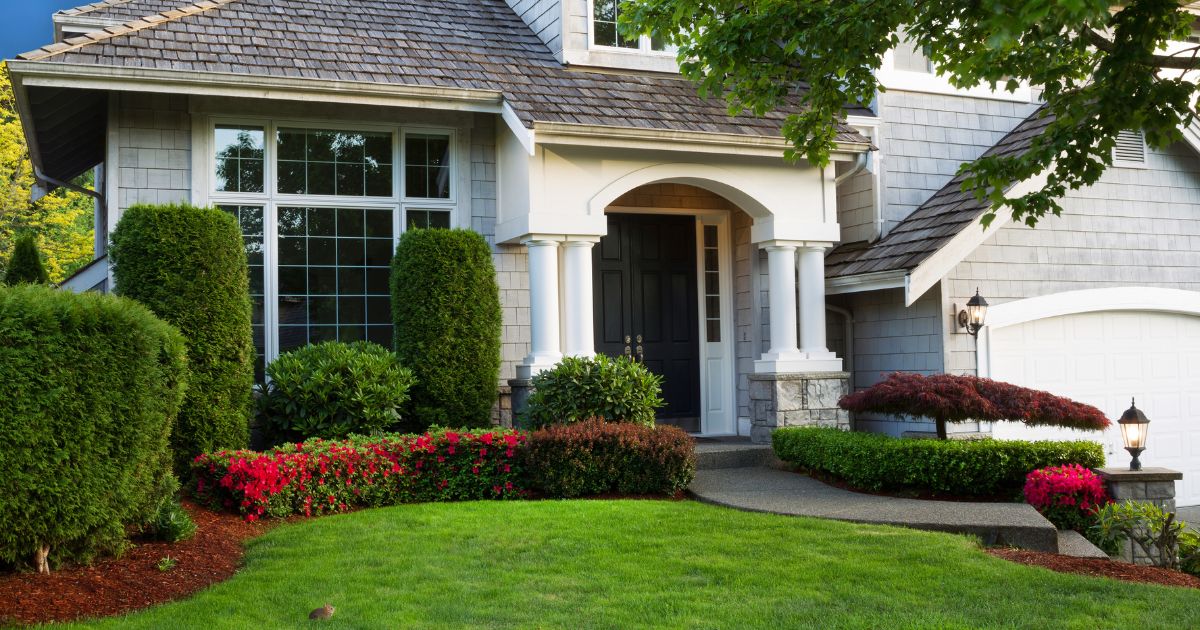
Commercial Landscaping
RELATED: Do You Have to Be Licensed to Be a Landscaper in Texas?
Commercial landscaping involves designing and maintaining outdoor spaces for commercial properties such as office buildings, hotels, shopping centers, or parks. A commercial landscaper should be able to work with business owners or managers to create an inviting outdoor environment that complements the aesthetic style of the property while remaining functional for customers.
Commercial landscapers often have unique challenges, such as adhering to local regulations regarding water usage or choosing plants that require minimal maintenance while still looking attractive year-round. They may also need to incorporate additional features, such as lighting fixtures or seating areas, into their designs.
Public Landscaping
Public landscaping refers to the design and maintenance of parks, public gardens, streetscapes, and other areas owned by cities or governments. Public landscapers must take into consideration factors such as safety when designing these spaces in order to provide welcoming environments for people from all walks of life. They must also consider the specific needs of each public space.
For instance, a park may require more open green spaces and playgrounds for children, while a streetscape may benefit from trees and other shade-providing features to create a comfortable environment for pedestrians. Public landscapers often work closely with city officials to make sure their designs adhere to budgetary constraints while still providing maximum benefit to the community.
Each type of landscaping service has its own unique considerations when it comes to designing and maintaining outdoor spaces. A skilled landscaper must be able to work with clients or stakeholders in order to create a beautiful outdoor environment that meets all requirements while remaining sustainable.
Specializations in Landscaping
Landscaping is a vast field that offers a variety of services. Landscapers specialize in various areas and offer customized solutions according to the client’s needs. The following are some specializations in landscaping:
Garden Design and Installation
Garden design and installation is an area that involves creating beautiful outdoor spaces using plants, trees, shrubs, and other natural elements. A professional landscaper has the knowledge of soil types, plant species, planting techniques, and maintenance practices required for creating stunning gardens. During the consultation process with clients, the landscaper will assess the site’s conditions, such as soil type, sun exposure, and drainage issues, to determine which plants are best suited for the space.
Once a plan is created by the landscaper and approved by clients, garden installation begins. From garden edging to flower bed installation to decorative stone placement or even water features such as fountains or ponds, professional landscapers ensure their designs create an aesthetically pleasing outdoor environment while also being functional.
Hardscaping (Patios, Walkways, and Retaining Walls)
Hardscaping refers to any non-living element added during landscaping. These include patios and walkways made from different materials like concrete slabs or natural stone pavers. Hardscaping also includes retaining walls which can be used for enhancing proper drainage on sloping sites while adding structure and interest to landscaping projects.
Professional landscapers can help clients select materials that complement existing structures or choose something different for contrast. They have extensive knowledge about hardscape material functionality, so they can advise on which materials will work best depending on factors like foot traffic levels or climate conditions.
Water Features (Fountains & Ponds)
Water features bring life into landscapes through movement and sound while also offering benefits such as attracting wildlife or improved relaxation and stress relief. The installation of water features like fountains or ponds requires special skills and equipment. Professional landscapers are knowledgeable when it comes to creating water features that enhance the overall design while also ensuring they are functional with proper water circulation, pump size, and filtration systems.
They will also ensure that the water features fit within local regulations for safety standards. Landscaping is a broad field with many specializations.
Garden design & installation, hardscaping, and water feature installations are just a few of the areas in which professional landscapers specialize. These skilled professionals offer customized solutions tailored to client’s unique needs while adhering to industry best practices for effective implementation of their designs.
The Process of Landscaping
Site Analysis and Planning: Understanding the Site
The first step in any landscaping project is analyzing the site to determine its strengths, weaknesses, and potential. This involves evaluating the existing topography, soil type, drainage conditions, and microclimates. The landscaper will also consider factors such as sun exposure, wind patterns, and views to ensure that the design maximizes the site’s natural assets.
Once these factors have been identified, a plan is developed that outlines how the space will be used and what elements will be included in the design. This might include features such as garden beds, pathways, decks or patios, water features, or outdoor lighting.
One key element of site analysis is ensuring that any proposed changes are in compliance with local regulations related to zoning laws and environmental protection. In addition to ensuring compliance with regulations on a local level, it’s important to consider sustainability practices in order to create landscapes that require less maintenance over time while reducing their environmental impact.
Design Creation: Turning Ideas into Reality
After completing a thorough analysis of the site and developing an overall plan for landscaping, design priorities are established for moving forward with finalizing design choices. The next step in this process is turning ideas into reality by creating detailed drawings that illustrate how different elements will fit together.
During this phase of the landscaping process, landscapers work closely with clients to fully understand their preferences for color schemes, plant species preferred materials, styles, etc. Once these preferences are understood, they can be integrated within overall plans so there are no surprises when it comes time for installation. The designs produced during this phase will include detailed plans regarding plant selection materials choices, hardscapes, walkways retaining walls, outdoor lighting systems, irrigation techniques, drainage solutions, etc. These plans take into account all aspects of landscape design, including function aesthetics, safety durability, environmental considerations, etc.
Presentation: Bringing the Vision to Life
Once the design has been finalized, it’s important to present this design to clients in a way that they can easily see how it will look once completed. This is done through the use of 3D computer-generated models or scaled-back models used for visual representation.
The presentation may also include a written proposal outlining the scope of work and the cost associated with each stage of the project. The goal of this phase is to ensure that clients have a clear understanding of what will be involved in bringing their vision to life and what they can expect in terms of costs, timeline, and final results.
Installation: Bringing It All Together
The final phase of landscaping is installation, which involves bringing all elements together using specialized equipment, tools, and techniques. The installation process starts with site preparation, which may include soil preparation grading, excavation, or removal of existing features depending on the scope of work required. Once all preparations have been completed, installation begins with laying out hardscapes such as patios, walkways, or retaining walls, followed by planting trees, shrubs, ground covers, flowers, etc. After planting has been completed, any necessary irrigation systems are installed, along with outdoor lighting systems, drainage solutions, etc.
During this phase, it’s important for landscapers to communicate effectively with clients so that they are aware of any challenges that arise during installation and have input into any decisions regarding changes in design direction or materials used. By working together throughout the process, both parties are able to achieve their shared vision for what was once just an idea.
The Role Of A Landscaper In Society
The role of landscapers extends beyond creating beautiful outdoor spaces; it also contributes significantly to society as a whole. Here are some ways in which landscapers play an essential role:
Environmental Benefits
One significant benefit provided by professional landscapers relates to environmental protection and sustainability practices. They not only beautify outdoor spaces but also help to preserve the environment by creating green spaces that benefit both wildlife and people. Plantings of shrubs and trees can reduce carbon dioxide levels while providing shade and habitat for birds, insects, and other wildlife.
Economic Benefits for Property Owners
Professional landscaping services help property owners maintain their properties by improving the aesthetics, functionality, and value of the property. Beautifully landscaped homes or commercial buildings often command higher prices on the market, which can result in higher rental rates or increased profits when sold. Property owners who invest in professional landscaping services will see an increase in revenue compared to those who do not invest in these services.
Social Benefits for Communities
Professional landscapers also contribute to the social well-being of communities by creating outdoor spaces that bring people together. Parks, playgrounds, community gardens, and pathways all promote physical activity and social interaction among residents while enhancing community pride.
RELATED: How Much Does A Landscaper Cost: A Comprehensive Guide for Homeowners
The Future Of Landscaping Industry
The landscaping industry is rapidly evolving as new technologies emerge with more sustainable practices being implemented.
Technological Advancements In The Industry
Landscapers are leveraging technology advancements to improve their work processes. One example is using drones to survey landscapes before installation begins, which allows them to create 3D models of a site before any work begins reducing mistakes and saving time. Another technology leveraged by landscapers is irrigation systems with smart sensors that adjust watering schedules based on weather changes and soil moisture levels, saving water resources while reducing maintenance requirements for landowners.
Sustainability Practices In Landscaping
Landscaping practices are focused on environmental sustainability as they reduce water usage and adapt plants that need less maintenance, such as drought-resistant plants and synthetic grass, while still maintaining beautiful landscapes, which reduces overall maintenance cost over its lifetime
Career Opportunities For Aspiring Landscapers
The landscaping industry offers a variety of career opportunities, including landscape designers, project managers, and installation crews. With the increasing demand for sustainable landscapes and the emergence of new technologies, there will be plenty of opportunities for aspiring landscapers to enter this dynamic field.
The Role Of A Landscaper In Society
Environmental benefits of landscaping
Landscapers play a critical role in protecting the environment. They help reduce soil erosion by planting trees, shrubs, and groundcovers that hold the soil in place.
Planting more vegetation also helps to improve air quality as they absorb carbon dioxide and release oxygen into the atmosphere. Additionally, a well-designed landscape will help to decrease the temperatures around buildings, which can help to reduce energy consumption.
Furthermore, landscapers also assist in preserving natural resources by selecting drought-resistant plants that do not require large amounts of water. This helps with water conservation efforts and minimizes water runoff.
Economic benefits for property owners
Professional landscaping services can increase property values significantly. A home with an aesthetically pleasing landscape design is more likely to sell at a higher price than one without one. It is estimated that well-maintained landscapes increase property value by as much as 12 percent.
A landscaper can also help save money by reducing energy costs through carefully placed trees and shrubs, which provide shade during hot summer months. They can also advise on the installation of low-maintenance lawns or native plantings which require less watering, thus saving homeowners money on their utility bills.
Social Benefits for Communities
Landscaping can have tremendous social benefits for communities. Studies show that green spaces have a positive impact on people’s mental health and well-being. Public parks, community gardens, and other green spaces provide residents with places to relax, exercise or socialize.
In addition to providing leisure opportunities, natural habitats created by landscapers provide food sources and shelter for wildlife in urban areas where it may otherwise be scarce. This can lead to greater biodiversity within cities and towns.
Moreover, a well-tended landscape enhances the aesthetic appeal of an area which fosters civic pride among residents. It can also create a sense of community and encourage people to spend time outside, which can lead to stronger social connections.
The Future Of Landscaping Industry
Technological advancements in the industry
The landscaping industry has seen significant advancements in technology over the past few years. New software programs are available that allow landscapers to design and present their plans virtually, which can save time and money. Drones are also being utilized for site surveys, mapping, and inspecting landscaping projects.
Furthermore, robotic mowers and other automation equipment have made landscaping more efficient. These machines reduce the need for manual labor, which saves on operational costs while improving productivity.
Sustainability Practices in Landscaping
As environmental protection becomes increasingly important, landscapers are adopting sustainable practices such as using native plants and implementing water-saving measures. They also incorporate natural pest management techniques that eliminate the need for harmful pesticides and herbicides.
The sustainable landscape design incorporates features such as rain gardens, green roofs, and permeable hardscapes that absorb water instead of contributing to runoff or erosion. The goal is to create an ecologically responsible landscape that is beautiful while minimizing environmental impacts.
Career opportunities for aspiring landscapers
The future of the landscaping industry looks bright, with projected growth of 10% by 2026, according to the Bureau of Labor Statistics. This provides excellent career opportunities for aspiring landscapers who can choose from a range of specializations, including garden design, hardscaping, or irrigation systems installation.
Landscaping companies are looking for skilled professionals who possess creativity and technical knowledge to provide outstanding services that meet clients’ needs while working within budget constraints. Apprenticeships or on-the-job training are available in many areas providing individuals with an opportunity to learn while earning a wage.
Professional landscapers play a vital role in society by providing numerous benefits to the environment, property owners, and communities. As the industry continues to evolve with technological advancements and sustainability practices, it will create even more career opportunities for aspiring landscapers.
The Future Of Landscaping Industry
Technological Advancements in the Industry
The landscaping industry is undergoing a technological revolution, with new advancements making the work easier and more efficient. One of the most notable advancements is in the area of automation. With automated lawnmowers and irrigation systems, landscapers can now save time and increase productivity.
Additionally, digital tools such as 3D modeling software are aiding in design creation, allowing for more accurate plans to be developed. Another advancement is in drone technology which has made it easier for landscapers to conduct site analysis without physically visiting a location.
Drones can provide aerial views of properties which give designers a wider perspective on what needs to be done. Moreover, they are useful for mapping as well as creating 3D models of landscapes.
Sustainability Practices In Landscaping
Sustainability has become one of the most significant trends within the landscaping industry as people have become more environmentally conscious about their living spaces. For this reason, many landscaping companies are shifting towards eco-friendly practices that promote sustainability. One way to achieve sustainability is by using native plants that require less maintenance than imported species.
These plants are better adapted to local conditions and require less watering or fertilizing – reducing costs for both property owners and landscapers while promoting biodiversity. Furthermore, reducing water use through the implementation of efficient irrigation systems or xeriscaping techniques (using drought-tolerant plants) can also contribute towards a sustainable landscape design that conserves water resources while maintaining an aesthetically pleasing environment.
Career Opportunities for Aspiring Landscapers
The future of the landscaping industry looks bright, with ample career opportunities available to those who want to join this dynamic field. With every year that passes, there’s an increased demand for professional landscapers who have knowledge of the latest technologies and techniques within this sector.
People interested in landscaping can choose from a variety of job roles that include landscape designers, installers of outdoor living spaces, hardscaping experts, and groundskeepers. Moreover, with the rise in awareness of sustainable practices within the industry, careers such as irrigation specialists and sustainability consultants are growing rapidly.
Frequently Asked Questions
What is the characteristic of a landscaper?
The characteristic of landscaper possesses a blend of creativity, knowledge of plants and design principles, and the ability to work with various tools and equipment to transform outdoor spaces into visually appealing and functional environments.
Why choose a professional landscaper?
Choosing a professional landscaper ensures that you have access to their expertise, experience, and industry knowledge, resulting in a well-designed and well-maintained outdoor space that meets your specific needs and preferences.
What is the fundamental nature of landscaping?
The fundamental nature of landscaping involves the artful manipulation and enhancement of the natural environment, incorporating elements such as plants, water features, hardscapes, and other design elements to create harmonious and aesthetically pleasing outdoor spaces.
What is a manmade landscape?
A manmade landscape refers to a deliberately designed and constructed outdoor area, often created by human intervention, where natural elements are combined with built structures and features to create a specific environment or ambiance.
What are the importance and benefits of landscaping?
Landscaping holds great importance as it not only enhances the beauty and aesthetics of an area but also provides numerous benefits, such as improved air quality, soil conservation, noise reduction, and increased property value, while also promoting biodiversity and creating enjoyable spaces for recreation and relaxation.
What is the importance of landscaping in urban design?
In urban design, landscaping plays a vital role in mitigating the negative impacts of urbanization. It helps to soften the harshness of the built environment, provides green spaces for urban dwellers, reduces heat island effects, manages stormwater runoff, and contributes to creating sustainable and livable cities.
Conclusion
A landscaper is a professional who designs, installs, and maintains outdoor spaces. Landscaping is an essential aspect of society as it provides environmental, economic, and social benefits.
The role of the landscaper is to create beautiful and functional outdoor spaces for residential, commercial, and public areas. To become a successful landscaper, one requires knowledge of design principles, soil types, plant varieties, and irrigation systems.
They must also be skilled in using various tools and equipment. There are different types of landscaping services that cater to specific needs, such as residential landscaping, which focuses on creating beautiful homes, while commercial landscaping focuses on creating an attractive business environment that will attract clients.
Public landscaping aims at beautifying our neighborhoods by creating vibrant public spaces for everyone to enjoy. Specialization in landscaping includes garden design, hardscaping (patios, walkways), and water features (fountains) among others.
Importance of Hiring Professional Landscapers
While some people might opt to handle their lawn care needs themselves, hiring professional landscapers has many advantages. Professional landscapers have the necessary skills and experience to execute any project successfully.
They are also equipped with the right tools, which ensure quality work within set timelines. Professional landscapers will save you time and money since they can quickly identify potential problems before they occur, thereby preventing costly mistakes or damages that may arise from a lack of expertise or improper handling of equipment.
They are trained to keep your property looking great throughout the year by providing advice on how best to maintain your landscape’s health through proper watering schedules and fertilization practices. Moreover, working with professional landscapers creates peace of mind knowing that your property is well taken care of through regular maintenance routines such as mowing lawns or trimming hedges as required.
Final Thoughts on The Significance Of Landscaping
Landscaping is an essential aspect of our society, and it requires professional expertise to achieve the best results. It is an art that brings beauty and functionality to homes, commercial spaces, and public areas.
By hiring professional landscapers, we not only enhance the value of our properties but also contribute to making our communities more attractive. As technology advances rapidly in the industry, the future of landscaping looks bright, with sustainable practices being integrated into landscaping designs.

